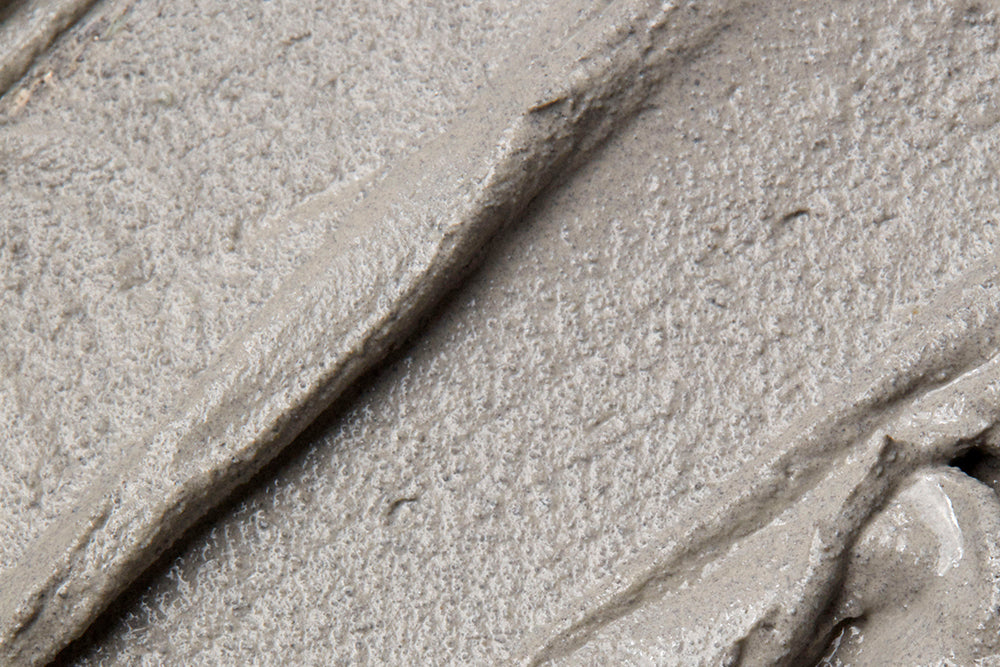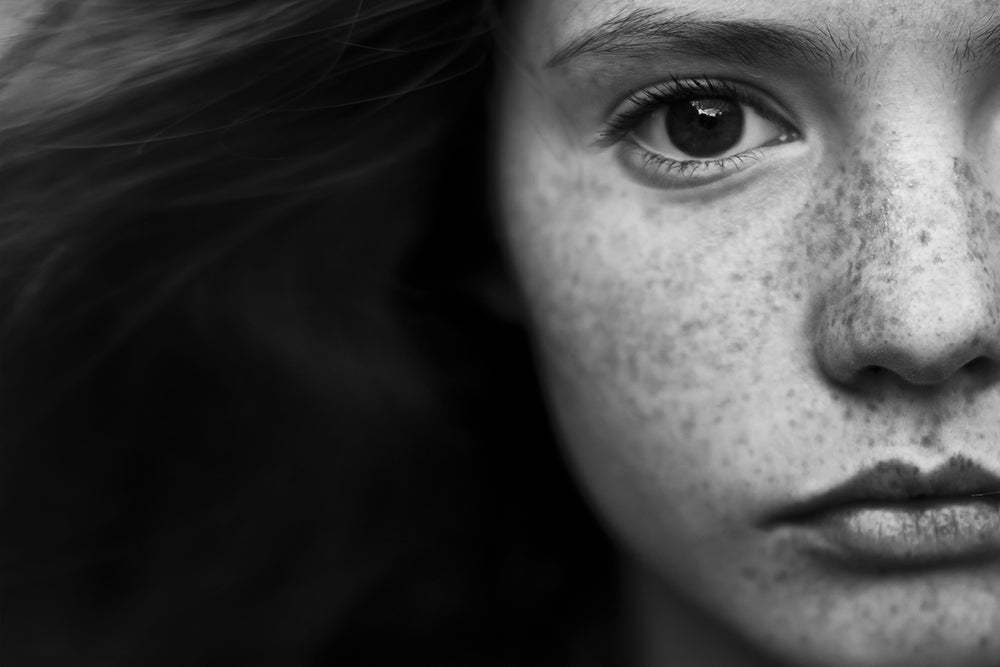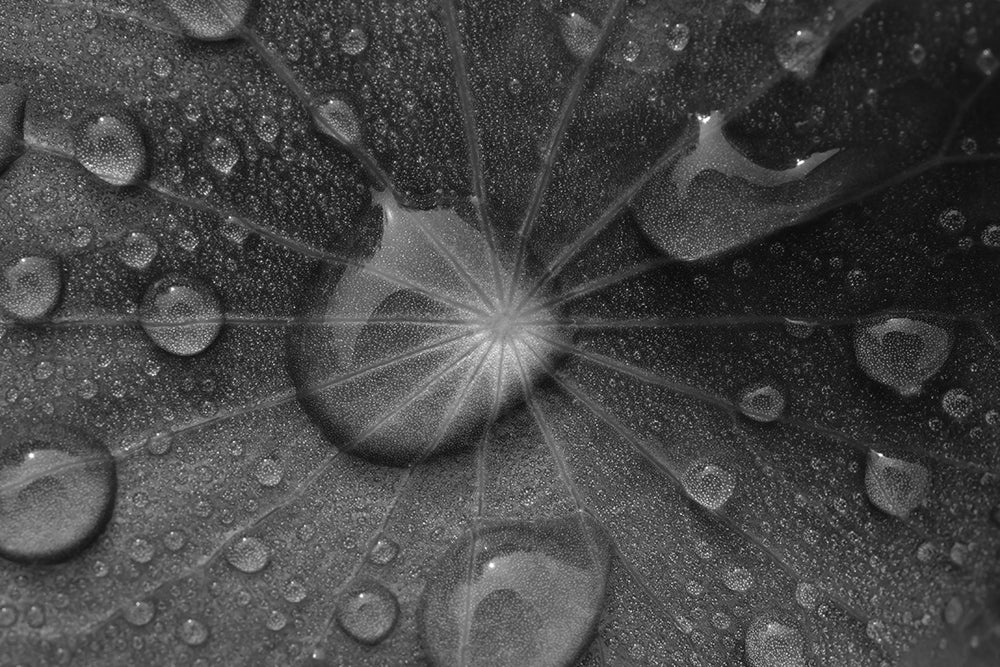
ingredient focus: Cambrian blue clay

the bottom line
it’s the star ingredient in our blue clay clarifying masque – Cambrian blue clay. But what makes this rare clay so special, where do we find it, and how else can it be used? read on and get ready to sing the blues.
first layer: history
Russian Cambrian blue clay isn’t as well-known as its cousins, kaolin and pink clay, but it’s believed to be the oldest blue clay on the planet – and seniority has its benefits. The term “Cambrian” refers to the first Paleozoic period, the Cambrian, which dates back approximately 600 million years. As you might have guessed, things were a little different back then. The continents were inundated with rising sea levels, which resulted in thick sedimentary deposits. In some areas of North America, Europe, and Asia this resulted in the formation of sandstone, shale, and limestone. In the Siberian region of Russia, the earth separated to form an isolated land mass, with the formation of sediment now known as Cambrian blue clay. The Cambrian beds are unusual in that they contain sand and clay which has been largely undisturbed for this period of time. Both the soft parts of organisms as well as their hard shells were preserved in these sites. The Cambrian Period is believed to have represented a time of great change in living creatures on earth, with a transition from simple and unicellular organisms to more complex, multicellular, and mineralized life forms.
second layer: science
There’s science behind the hype - recent studies have demonstrated the anti-microbial activity of blue and green clays. By identifying both the natural environment of clays which are toxic to bacteria, as well as how these clays actually destroy microbes, new potential antibiotics can be developed. While the exact chemical details may be complex, blue clay has been shown clinically to heal Buruli ulcers in patients in the Ivory Coast. Even drug-resistant antibiotic strains, such as methicillin-resistant Staphylococcus aureus (MRSA), are susceptible to treatment with blue clay. The secret ingredient? Reduced iron, which gives blue and green clays their typical hue. This is different from the oxidized iron of the more common rust-colored clays, such as pink and red clays.
Our Cambrian blue clay also has a unique mineral composition, and includes calcium, iron, magnesium, silicon, aluminum, titanium, potassium, and sodium. Although it is in fact a blue clay, some batches will appear to be gray as a result of the mineral composition and temperature at the time of harvest.
third layer: beauty
Cambrian blue clay has been used for a number of indications (please note that these claims have not been evaluated by any medical agency, including the Food and Drug Administration (FDA) in the United States):
- Facial masks and a spot treatment for acne
- Anti-aging, to minimize the appearance of fine lines and wrinkles
- Treatment for sun burns and bug bites
- Salve for cuts, rashes, and infections
- Hair treatment to soften and restore hair follicles
- Face and body exfoliant
- Teeth whitener
- Increase blood circulation and lymphatic drainage
- Increase energy, reduce fatigue, and decrease excess fluid in the body
- Anti-inflammatory, to help reduce psoriasis and eczema
- Stimulation of the growth of skin cells and collagen
- Reduction of the appearance of blood vessels and cellulite
- Detoxification of the body
fourth layer: how to use it
There are easily a zillion ways to use blue clay, but here are some of our favorites:
- Facial masque: use 1 teaspoon (about 5 grams) of dry powder in a small, clean bowl (avoid metal instruments and dishes to avoid any reaction with the clay). Add enough water or other liquid of your choice to mix until the clay has a smooth and creamy consistency. Apply to the face with fingers or a brush to evenly coat the skin. Allow to dry partially then remove gently with lukewarm water. Alternatively, for a more exfoliating effect, allow to dry completely, rub the dry clay off your face, then remove the residual light layer of clay with lukewarm water. Follow with your usual serum or moisturizer. We love facial masques with Cambrian blue clay, as our skin appears deeply cleansed, more radiant, and more even in tone after repeated use.
- Body wrap: combine enough Cambrian blue clay with water to form a thick paste which can be spread on the body. Rest for 30-45 minutes on top of warm blankets covered with a plastic sheet (a shower curtain works well too), and cover with another warm blanket. Wash off in a warm shower or bath. Luxurious, rejuvenating, and messy, but worth it. For an extra benefit, add powdered seaweed to your paste.
- Detoxifying bath: fill your bathtub 1/3 full with warm water and add 100-200 grams of Cambrian blue clay. Allow the clay to hydrate for 5-10 minutes prior to filling the tub high enough to allow your body to be submerged. Agitate the water prior to entering, and rest for 10-15 minutes. We hear that Cambrian blue clay baths are ideally done once weekly. Good advice.
- Compress: Combine Cambrian blue clay with clean water to form a thick paste (0.5-1 cm thick). Spread over a piece of cloth cut to the size of the area to be treated. Cover another layer of cloth, wrap with a warm towel, and leave in place for 45-60 minutes, until the clay has completely dried. This ancient remedy has been used in the treatment of psoriasis, eczema, ulcers, and inflammation. Repeat daily as needed.
- Poultice: a poultice uses a thicker application of clay than a compress (2-3 cm thick), and it’s generally used for very localized areas of inflammation, such as sprained joints or arthritis. If the area is very warm and inflamed, avoid the warm cloth covering.
Afterwards, expect your skin to be warm and slightly reddish; Cambrian blue clay helps to stimulate the circulation. You may notice a gentle pulsating sensation which will resolve typically within 15 minutes.
fifth layer: how we do it
our blue clay clarifying masque features Cambrian blue clay, lemongrass, yuzu, and lime. Layer on for a detoxifying beauty treatment, twice weekly.
All this and more at www.anokhaskincare.com .
xx
anokha
references:
- https://vida-blue-clay.myshopify.com/pages/benefits-how-to-use
- https://phys.org/news/2016-01-scientists-blue-green-clays-bacteria.html
- https://www.sciencedirect.com/science/article/abs/pii/S0924857918302097
- http://www.cambrianblueclay.com
- https://en.wikipedia.org/wiki/Cambrian



leave us a comment
This site is protected by hCaptcha and the hCaptcha Privacy Policy and Terms of Service apply.